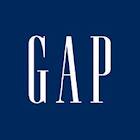
Customer perceptions are needed to be met and exceeded. It requires from companies to study the buyer behaviour of their existing and potential customers and to devise programs and initiatives to offer superior customer service. According to Parasuraman et al (1991, p.42), customer services expectations consist of two levels: desired and adequate. Desired level of expectations is the level of service a customer wanted to be performed, while the adequate level of expectation is the “acceptable” level of service by the customer. A service quality model, highlighting the main requirements for delivering high quality service which identifies five gaps as causes for unsuccessful service delivery has been formulated by Parasuraman et al (1985, pp.41-50): Gap between expectation of client and perception of management. In order to be able to exceed customer expectations, and in this way to insure customer satisfaction service company management has to have a clear and accurate perception about customer expectations. A lack of such knowledge creates a gap that can be one of the main reasons for service customers not being satisfied. Gap between perception of management and service quality specification. Even if management accurately perceive customer expectations there are still chances of customer dissatisfaction that can be caused by the gap in planning quality of the service according to customer expectations Gap between specification of quality and the delivery of service. Another potential area for customer dissatisfaction relates to the failure of efficiently specified quality service due to various reasons, including incompetent workforce, and inefficient working conditions. The gap between the delivery of service and external communications. In cases where service company employees have relevant skills and willingness to offer efficiently specified quality service, still customers may be left unsatisfied due to external factors Gap between perceived and expected service. Lastly, one of the common causes for customer dissatisfaction in service sector…
By John Dudovskiy
Category: Customer Services

Kotler and Keller (2006, p.144) define satisfaction as a person’s feeling of pleasure or disappointment which resulted from comparing a product’s perceived performance or outcome against his/ her expectations. Customer perceived value has been defined as “the difference between the perspective customer’s evaluation of all the benefits and all the costs of an offering and the perceived alternatives” (Kotler and Keller, 2006, p.141) Conceptualised service encounter satisfaction model proposed by Walker (1995, pp. 8-9) is divided into three disconfirmation stages: Evaluation stage. In that stage the peripheral service is encountered prior to the core service being consumed. Core service is more anticipated by the consumer. After core service delivery interaction is undertaken in the final stage. The influence of several complex and multiple factors to the customer tolerance zone is noted by Zeithaml et al (1993, p.2). Eleven factors affecting both desired and adequate service levels are described by Zeitheml et al (1993, pp.3-11) as following: Desired service influencing factors: 1. Enduring service intensifiers Derived expectations Personal service philosophies 2. Personal needs 3. Explicit service promises Advertising Personal selling Contracts Other communications 4. Implicit service promises: Tangibles Price 5. Word of mouth: Personal Expert (Consumer reports, publicity, consultants, surrogates) 6. Past experience Adequate service influencing factors: 7. Transitory service intensifiers Emergencies Service problems 8. Perceived service alternatives 9. Self-perceived service role 10. Situational factors: Bad weather Catastrophe Random over-demand 11. Predicted service References Hutchinson, TP, 2009, “The customer experience when using public transport: a review”, Proceedings of the ICE – Municipal Engineer Kotler, P & Keller, K, 2006, “Marketing Management”, twelfth edition, Prentice-Hall McManus, J & Miles, D, 1993, “An underground journey: Managing Service Quality”, MCB UP Ltd Miller, M, 1995, “Improving customer service and satisfaction at London Underground”, Managing Service Quality, Vol.5, Issue:1 Walker, JL, 1995, “Service Encounter Satisfaction: Conceptualized”, Journal…
By John Dudovskiy
Category: Customer Services

Gap Inc. is a San Francisco based American retailer which sells clothing and accessories. The company was founded in 1969 by Donald and Dorris Fisher. The aim of the company is to help people to express their personal style throughout their life. The company comprises five brands: Gap, Banana Republic, Old Navy, Piperlime and Athleta. The company has 3465 stores worldwide with spores in Canada, France, Ireland, Japan, UK and US owned by the company and stores in other companies are operated by franchisers. Advertising Print and broadcast ads. Gap uses print and broadcast ads intensively both in UK and USA placing advertisements in newspapers and broadcasting its ads in some TV channels in both continents. Along with traditional print and broadcast advertising, sometimes original marketing campaigns are launched, which proved to be memorable and highly efficient in numerous occasions. For instance, Gap launched a print and television advertising campaign, “Favourites” in 2005 with the participation of acclaimed musicians, including Brandon Boyd, Alanis Morisette, Liz Phair, Joss Stone, Keith Urban and others, where each musician performed an original remake of their favourite song wearing their favourite Gap jeans. Packaging outer. The outer packaging for the products of the company is being used as efficient advertising medium by Gap with the eye-catching company logo displayed in large font in it. Billboards. Being one of the most efficient advertising tools, billboards are used by Gap Inc. both in UK and USA. However it is more intensively used in US cities than in UK. Point-of-purchase displays. This advertising tool refers to products being displayed within the point of purchase area in a way that it is convenient to add them to their shopping basket for the people who are already paying for other items. These are usually items that are small in…

Organisational Linkages in Pepsi According to Malloch (2004) honest leadership was the distinctive trait of CEO of Pepsi that was especially well expressed in Steve Reinemund. The secret of Reinmund’s leadership, according to the author, was his ability to recognise the personal aspirations of his employees and linking these aspirations with organisational objectives. Honesty is considered to be one of the leadership traits that can be adopted by other organisations as a result of organisational linkages with them “Linkage analysis calls attention to ways of translating local gains into broader organisational benefits” (Goodman and Rousseau, 2004, p.3). Organisational linkage can be undertaken by linking effective leadership practices within Pepsi into other companies within various industries. For, instance leadership development initiatives that proved to be highly successful for Pepsi can be implemented by other companies as well, in order to achieve similar results. Collins (2010) mentions intensive rivalry between Pepsi and Coca Cola when analysing the leadership style in Pepsi and states that Coca Cola Company have to spend enormous amount of financial resources in their attempts to stay ahead in competition, whereas in Pepsi effective leadership style often results in gaining competitive edge for the company in many aspects with less financial resources spent. This example is a clear illustration of the importance of effective leadership. Efficient leadership not only has intangible positive impacts within organisations such as motivated employees and energised environment, but also has a direct positive impact on organisations in terms of financial gains which can be seen from the case of Pepsi. Explaining the reasons of efficiency Pepsi medium and strategic level managers operate in Cummings and Worley (2008) argue that Pepsi web-based manager development programs such as MyDevelopmentNet and MyCareerConnection play important role. These and similar programs can also be adopted by many businesses, as…

Orange PEST Analysis Political, economical, social, and technological factors effecting Orange are summarised on the table below, followed by a detailed explanation of each of them: Political Stronger consumer rights within Europe Roaming regulation EU regulatory framework for communications industry Strategic collaborations Economical Fluctuations of GDP exchange rate Global economic crisis of 2007-2010 Inflation France – biggest contributor to the revenue Social ‘Green’ issues Ageing population Changing work patterns Technological Technological innovations 3G generation Emergence of alternative technology 1 Political Factors A) Stronger Consumer Rights Within Europe Stronger consumer rights within Europe compared to most of the other parts of the world can be considered to be the most important political factor for Orange due to the fact that the largest number of company’s client base is situated in Europe. This fact makes it compulsory for Orange to follow all the rules and regulations in any European country it operates, including rules and regulations concerning the rights of consumers. B) Roaming Regulation. EU Roaming Regulation proposed by European Commission in 2006 aims to reduce charges for mobile phones usage abroad by 70% from June 2007 (Saplista, 2008). The implications of the current regulation for Orange are direct, due to the fact that the company obtains a specific percentage of its revenues through Europeans using their mobile phones abroad. C) EU Regulatory Framework for the Communications Sector. Most of the European Union member states have implemented European Union Regulatory Framework for communications sector adopted in 2002 (Dimireva, 2010). The aim of the framework is to encourage the competition in telecommunications sector, and Orange is one of the main players in this market, therefore the framework has direct implications for Orange D) Strategic Collaborations Orange announced a new everything everywhere initiative in 2009, according to which company was…

Supply-chain management at Toyota is an element of company’s operations strategy which is thoroughly based on the Toyota Production System (TPS). It was developed in the 1940’s by Shigeo Shingo and Taiichi Ohno. As Toyota’s success gained world-wide coverage, at was followed by interest by other companies in TPS, the principles of which is expressed by the term of “lean manufacturing” Liker (2005, p.16) lists following components of Toyota Supplier Partnering Hierarchy: mutual understanding and trust, interlocking structures, control systems, compatible capabilities, information sharing, joint improvement activities, and Kaizen and learning. “JIT system – a system that organizes the resources information flows and decision rules that enable a firm to realise the benefits of JIT principles”. (Krajewski, Ritzman & Malhotra p.349) The elements of just-in-time system are being pro-active in exposing problems, pull production based in Kanban, Total Quality Management, elimination of waste, reducing inventory through involving suppliers in planning process, continuous improvement, improving machinery and focusing on co-operation. According to Kanban each part travels with a card. New stock will only be required when that part has been used, the card is removed, using signals to re-stock this part. Kanban is well integrated in Toyota’s production system, because in Toyota there are limited number of parts with stable demand for them. Also, product mix is low and exchanges are infrequent. Capacity planning in any company is part of a supply-chain management for that specific company. Toyota’s way to capacity planning is that it strives to eliminate inventory. In achieving this objective Toyota relies heavily in pull system. Generally, the main objective is continuous improvement. Another operational excellence pioneered in Toyota and later adopted by other companies worldwide is a “Lean Concept”. Lean philosophy aims to achieve are the elimination of all waste, superior customer care, and Lean is based…

Defining logistics and quality within supply chain management Supply chain management. According to Wilton (2005, p.22 ), the term logistics has originated around 1930’s from the French word “logistique”, which is taken from the word “loger” meaning dividing troops. Nowadays, the term logistics is used in different spheres, bearing different meanings. The Council of Supply Chain Management Professionals (CSCMP) define logistics as “the plans, implements and controls that effectively and efficiently forward and reverse the flow and storage of goods, services and related information between the point of origin and the point of consumption in order to meet customer’s requirements”(CSCMP – online, 2010). Alternative definition of logistics is provided by Webster’s dictionary as “the procurement, maintenance, distribution, and replacement of personnel and material”(Webster’s Dictionary – online, 2010) Mentzer et al. define supply chain as a “set of three or more entities (organizations or individuals) directly involved in the upstream and downstream flows of products, services, finances, and/or information from a source to a customer” (2001, p.4) The quality within supply chain management is defined by the author of present essay as the measure of supply chain in terms of reducing costs of supply chain and increasing its efficiency. Houlinah (1998, p.14) lists the following differences between supply chain management and traditional manufacturing materials control. Firstly, supply chain is seen as a single process. Second, supply chain requires strategic approach and decisions making. Third, supply chain requires a different approach to inventory. And, fourth supply chain requires integration rather than interfacing for system approach. The objective of managing supply-chain, according to Stevens (1989, p.5), is to synchronise the requirements of the customer with the flow of materials from suppliers with the aim of effecting the balance to achieve high customer service, low inventory management and low unit cost. Companies in any…

Attitude is of primary importance for Kuyumi (2007, p.27), who insists that whatever leadership traits and abilities a person has, their successful application depends on a leader’s attitude to his work and workers. One of the most respected and experienced leadership scholars Posner (2002, p.27) claims, that in almost every survey he has conducted since the early 1980’s, although with varying percentages, honesty has topped the list Lutz (2005, p.44) believes integrity to be the cornerstone of leadership traits and insists that most effective leaders have a code, according to which they live, and they do not waver from it. Many authors have singled out passion as one of the compulsory ingredients of leadership characteristics. Davies (2007, p.16) believes passion to be seen in terms of passion for social justice, passion for learning and passion to make a difference. And he highlights the passion to make a difference as a key instrument to turn believes into reality and as the mark of sustainable leadership. Stressing the importance of vision Kumuyi (2007, p.9), reminds about the vulnerability of the vision and warns that ‘vision can’t be held sacrosanct’. The importance of the ability to have a vision and communicate the vision to all stakeholders of the company has been highlighted by many authors including Pockell and Avila (2007) and Parks (2005). The authors state that the ability to formulate and communicate the vision and making sure that the vision is shared by each member of the workforce can be considered as a cornerstone of effective leadership because it will result in increased level of motivation and performance among workforce. Effective communication skills, Frank (1993, p.386) argues, is the hallmark of an effective leader, and he clarifies, that this particular skill can be developed through education and practice. Northouse (2007) also considers communication skills…

Personal development objectives The author of the dissertation has identified a set of personal development objectives to be achieved during the research which consist of following points: 1. To get equipped with skills required to critically analyse academic work through undertaking literature review for the dissertation 2. To learn about the methodology of conducting research and primary data collection methods. 3. To improve communication skills and self-confidence by arranging and conducting interviews with five marketing professionals 4. To improve time management skills by adhering to research timetable and making amendments in the timetable whenever it is necessary to do so. 5. To improve analytical skills through analysing and discussing primary data collected through semi-structured in-depth interviews. 6. To improve writing skills by critically analysing and reviewing each sentence several times until the desired format is achieved. Achievement of Personal Development Objectives The personal development objectives to be achieved as results of the research specified by the author at the beginning of the dissertation have been achieved at the following extend: The author of the dissertation has acquired critical thinking and critical analysis skills by reviewing and critically analysing a vast amount of literature concerning the research topic, small amount of which was mentioned in the literature review section; The author of the paper has learned the methodology of conducting a research extensively, gaining a deep knowledge about issues which can be faced at each staged of the research, and more importantly how to overcome them. Moreover, the author has learned about advantages and disadvantages of each primary data collection method, forming an ability to allocate them with different kinds of researches. Communication, self-confidence, and interpersonal skills of the researcher have been improved as a result of organizing meetings with and interviewing five marketing professionals for primary data collection purposes.…
By John Dudovskiy
Category: Personal reflection & development

The jobs of managers consist of getting things done by others. Their efficiency can increase significantly if employees respect them and follow their order not because employees have to do it, but because they trust their manager and are motivated by them. Such a scenario can take place only when managers are leaders at the same time. Wesley (2007, p.48) provides a simple and comprehensive definition of leadership as ‘the art of persuading other fellow to do what we want him to do’. Another definition of leadership is proposed by Fred Smith, recited by Pockell and Avila (2007, p.83), who defines the leadership as the ability of getting people work for us when they are not obliged to. Harvey (2001, p.37), defines a leader as an individual, who facilitates the movement of a group of people by his actions toward a common goal. The scientific study of leadership is divided by Heilbrunn (1994, p.65) into three phases: 1900 – World War II. Researchers attempt to identify traits of leaders in order to study charisma. World War II – 1970s. Main focus of leadership researches are behaviour of leaders. 1970’s – present (date of publication).Interaction between leaders and followers are being studied. According to Burns (1978, p.142) transformational leadership is a relationship of shared stimulation and elevation, and that relationship can change followers into leaders and leaders into moral agents. Bass and Avolio (1990, p.88) specify four principles of Transformational leadership as: Idealised influence Inspirational motivation Individualised consideration Intellectual stimulation References Bass, BM. & Avolio, BJ, 1990, “The Implications Of Transactional And Transformational Leadership For Individual, Team, And Organizational Development”, Research in Organizational Change and Development, Vol. 4 pp.231-72. Burns, JM, (1978), ‘Leadership’, New York: Harper/Row Harvey, M, 2001, ‘The Hidden Force: A Critique of Normative Approaches to Business Leadership’, SAM Advanced…
